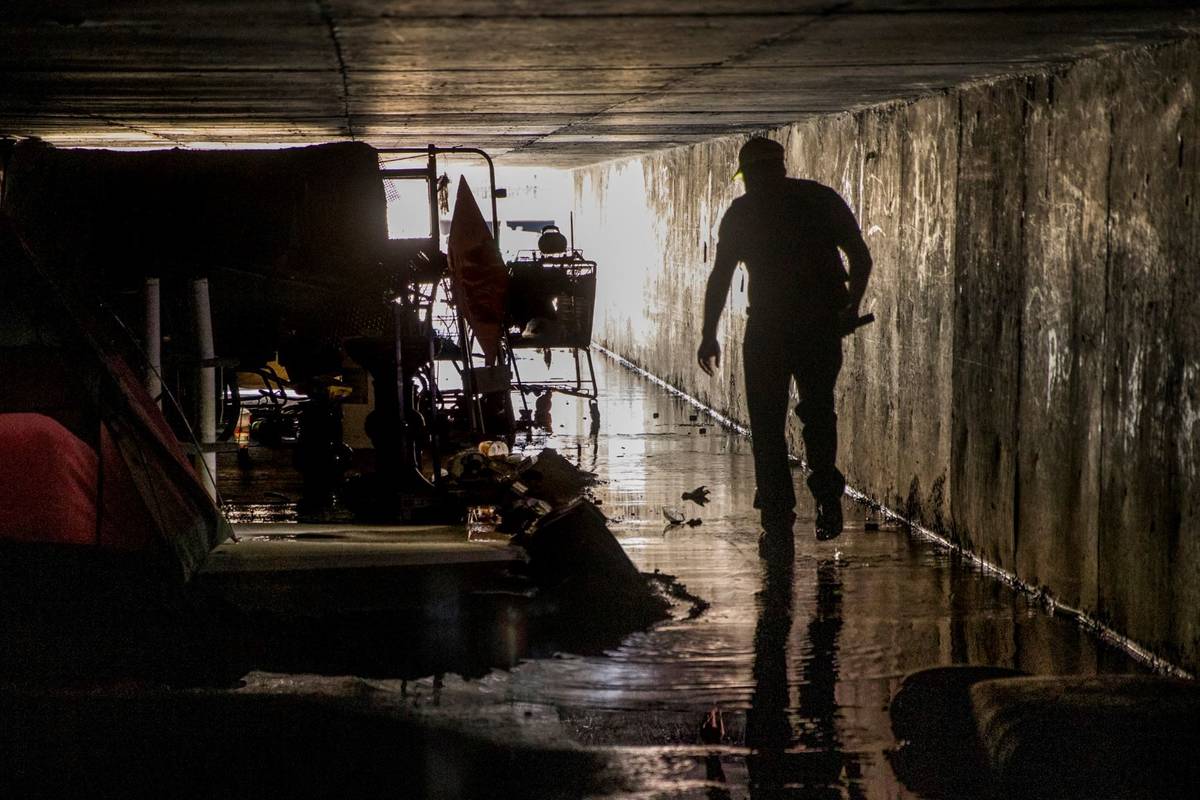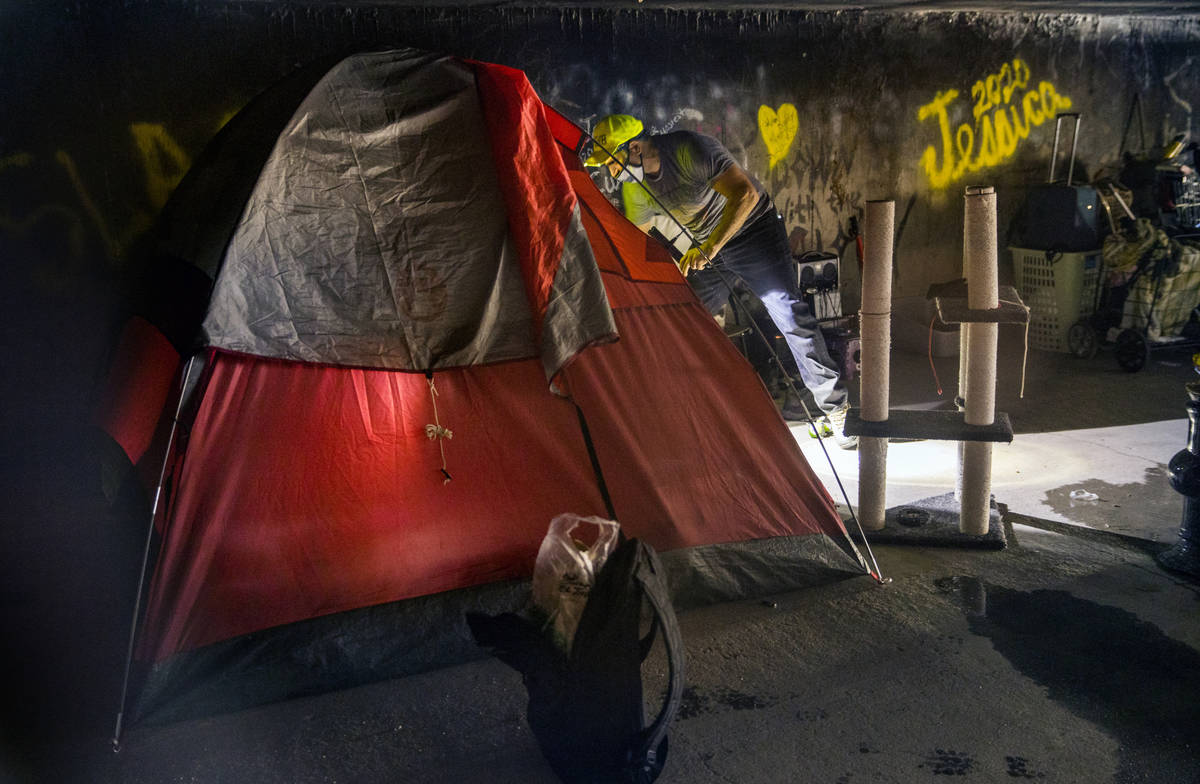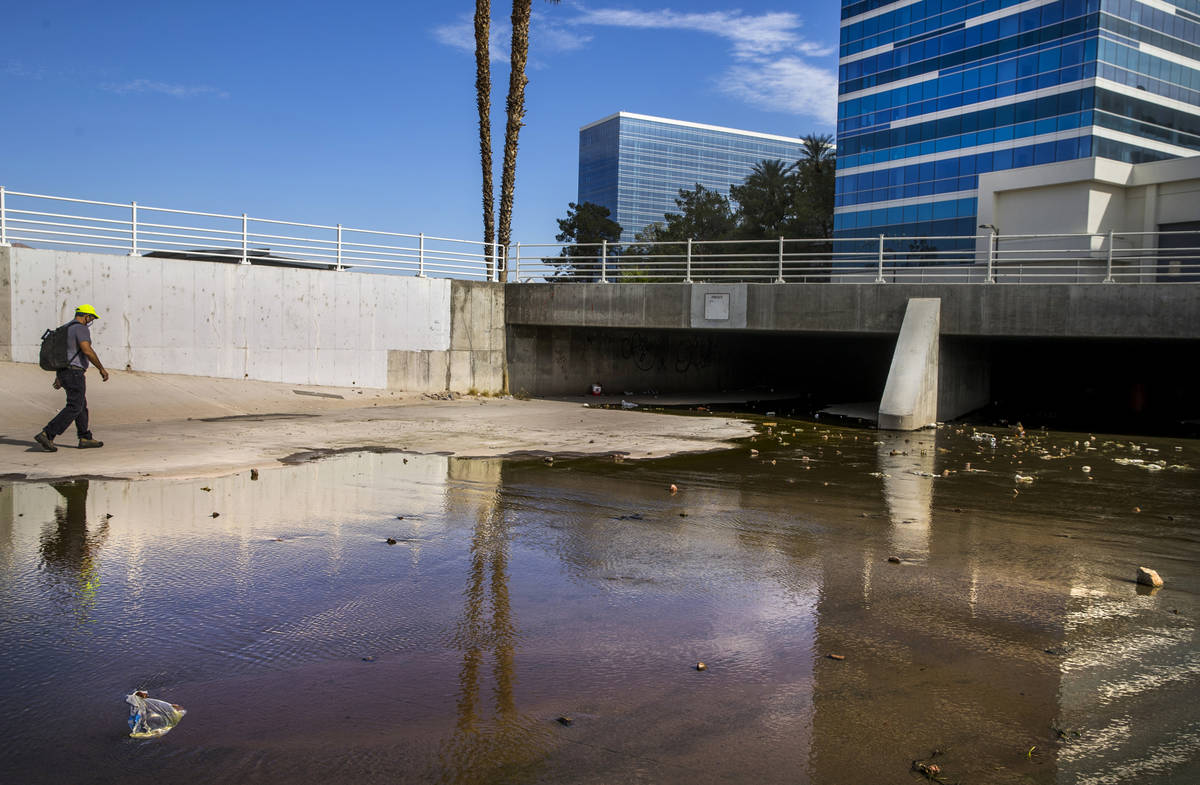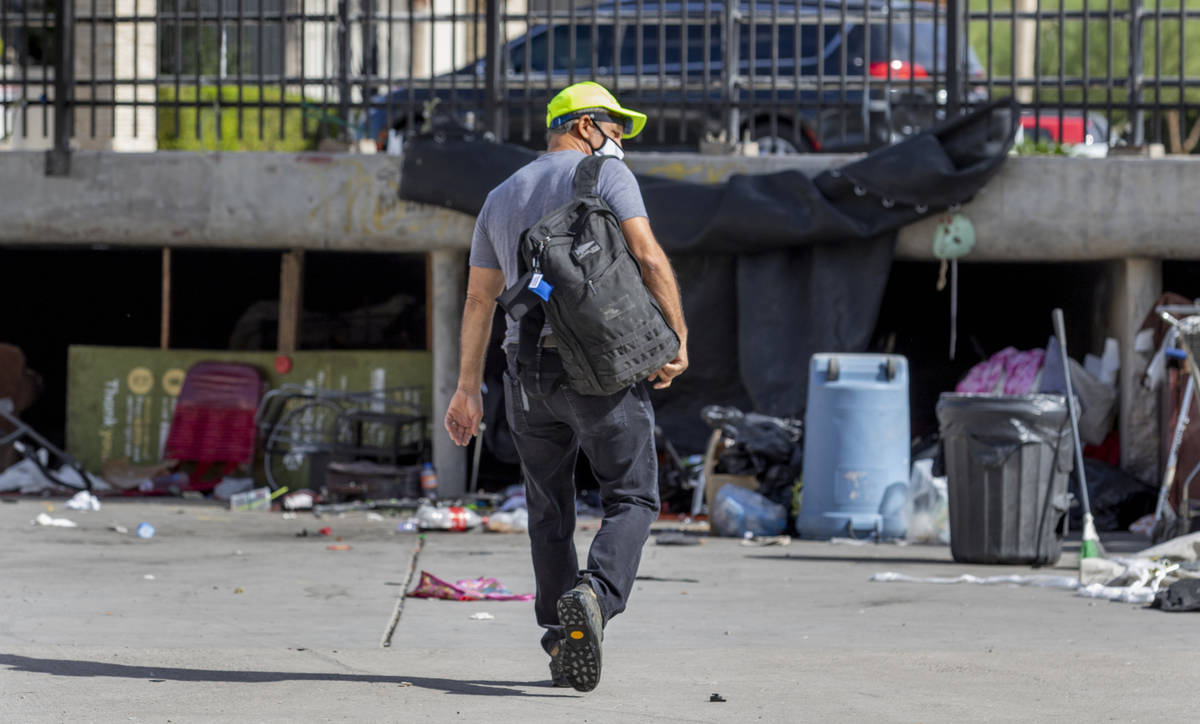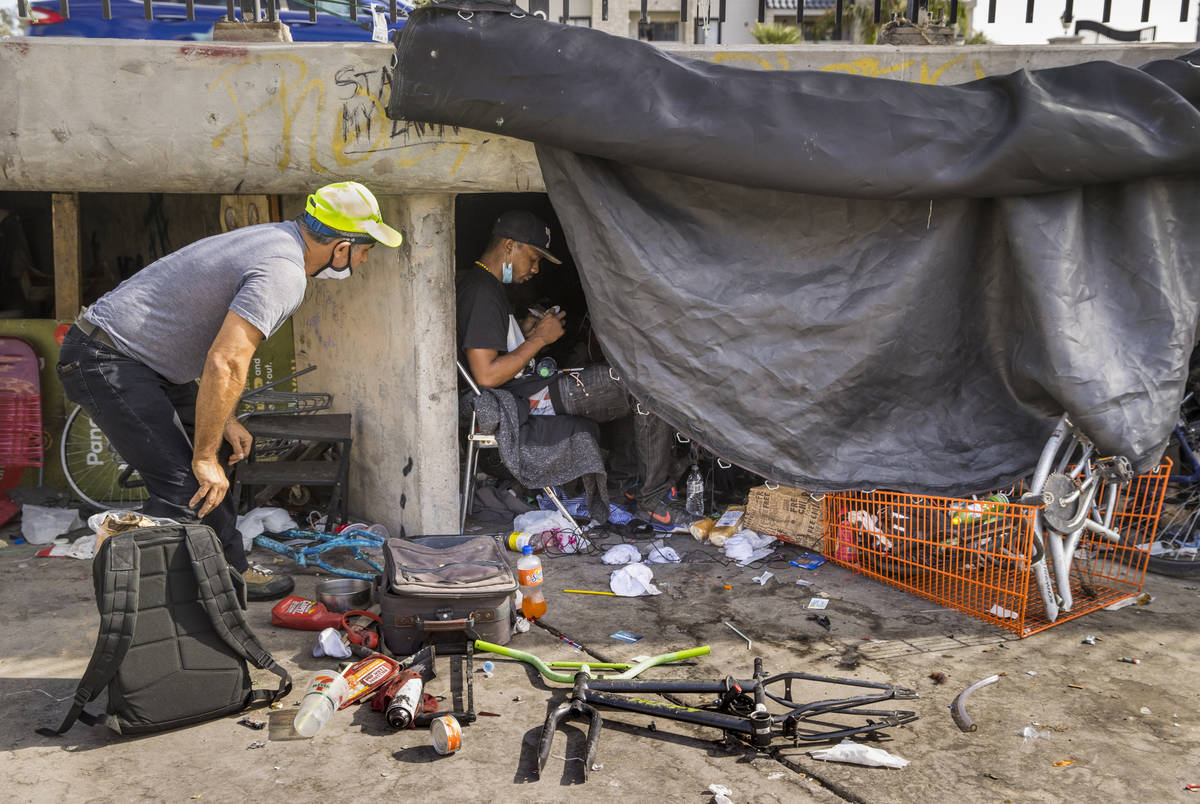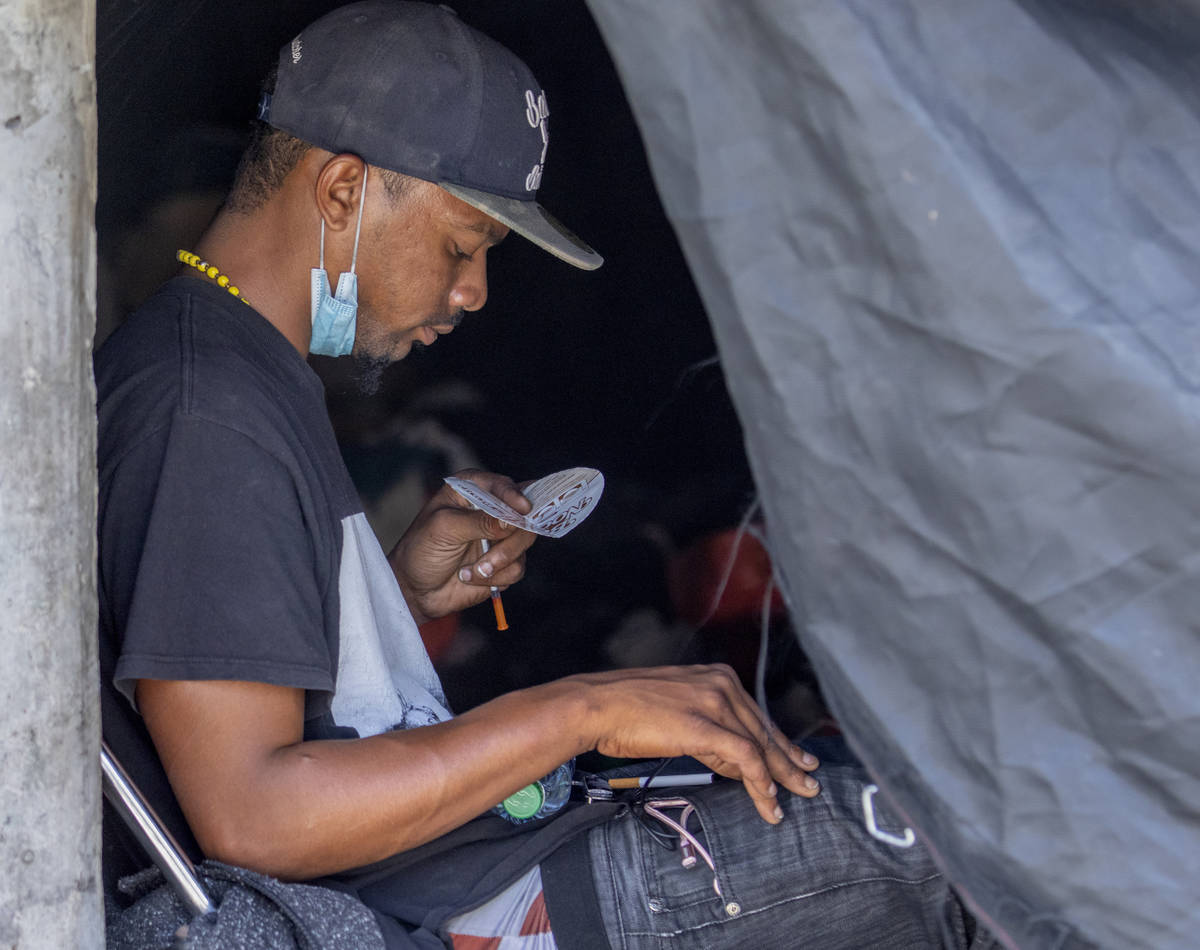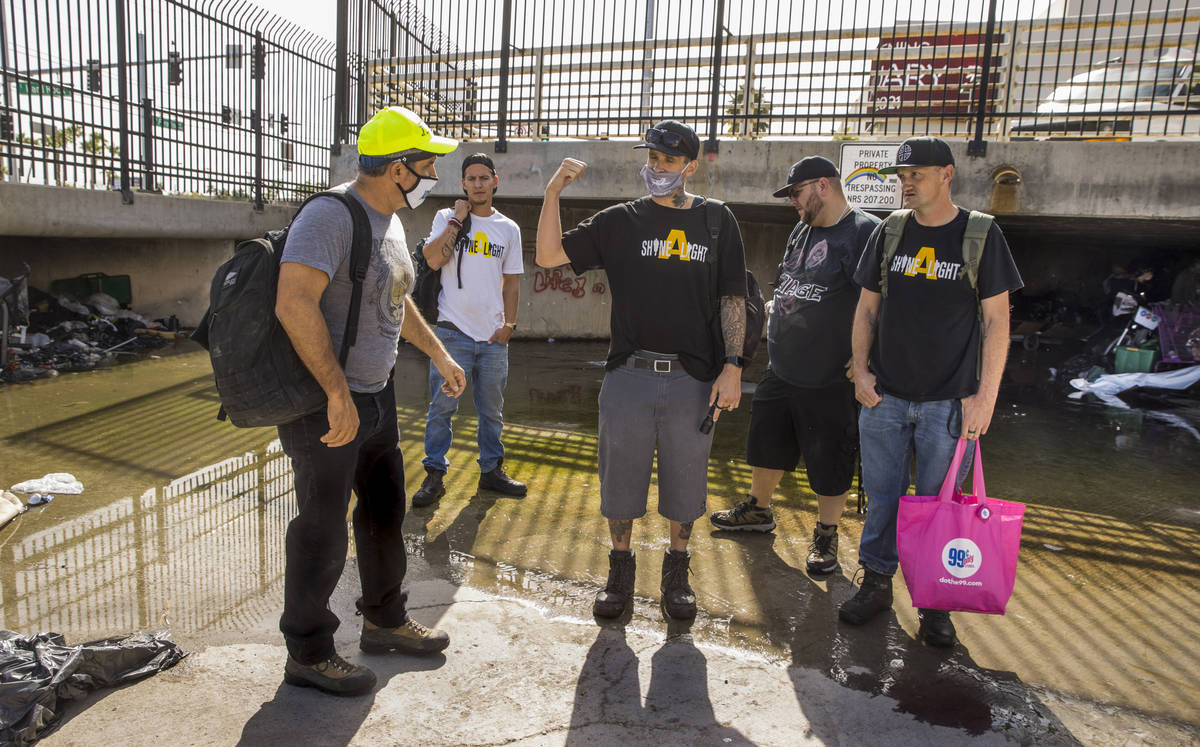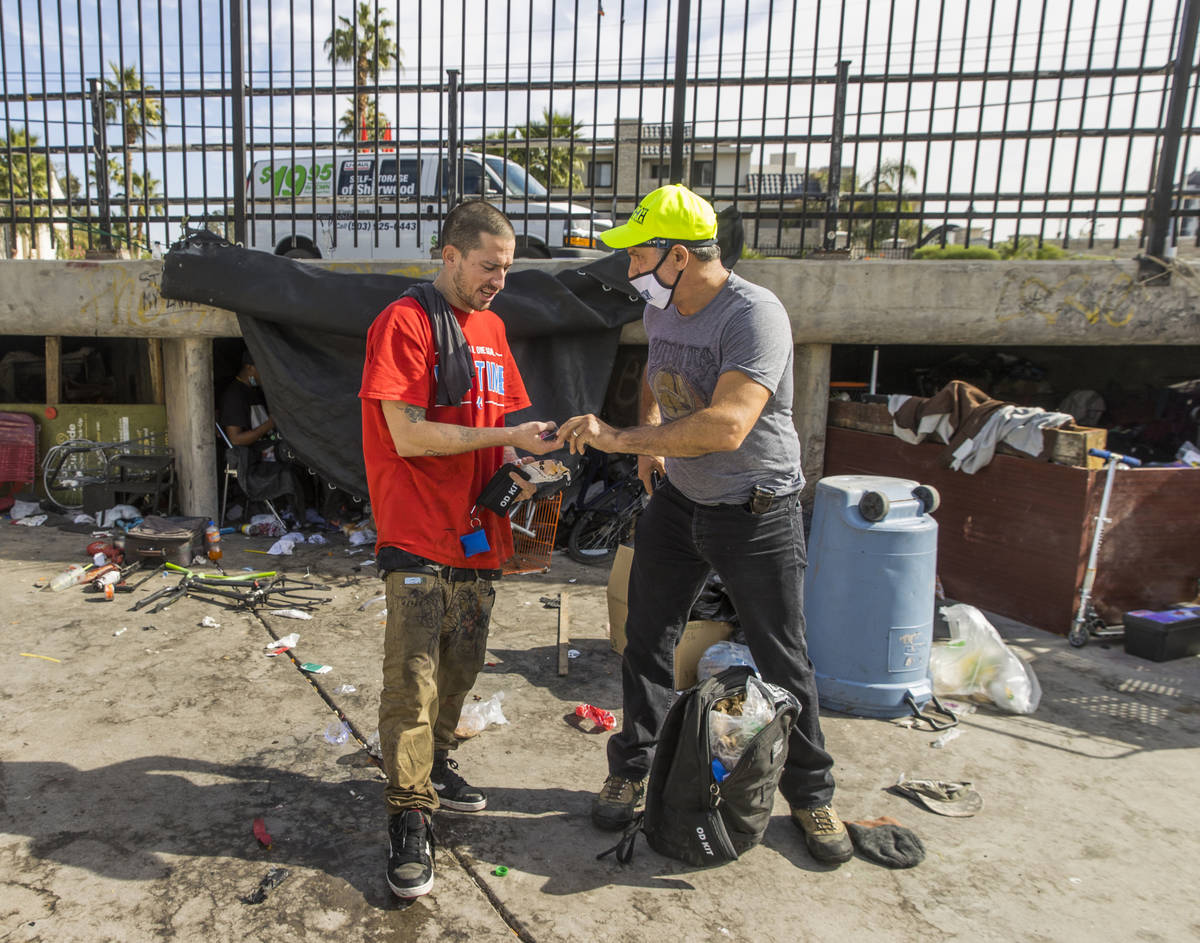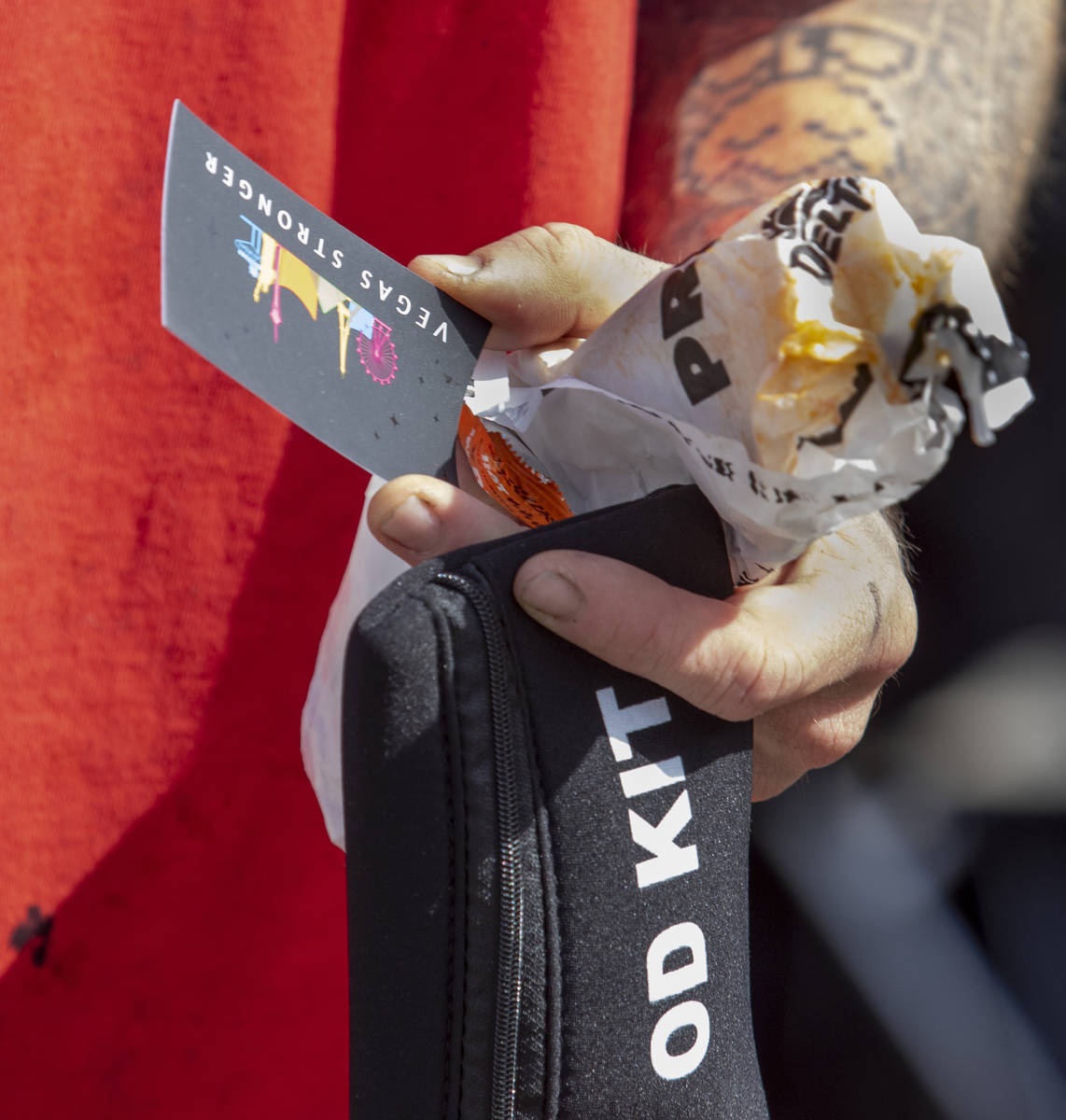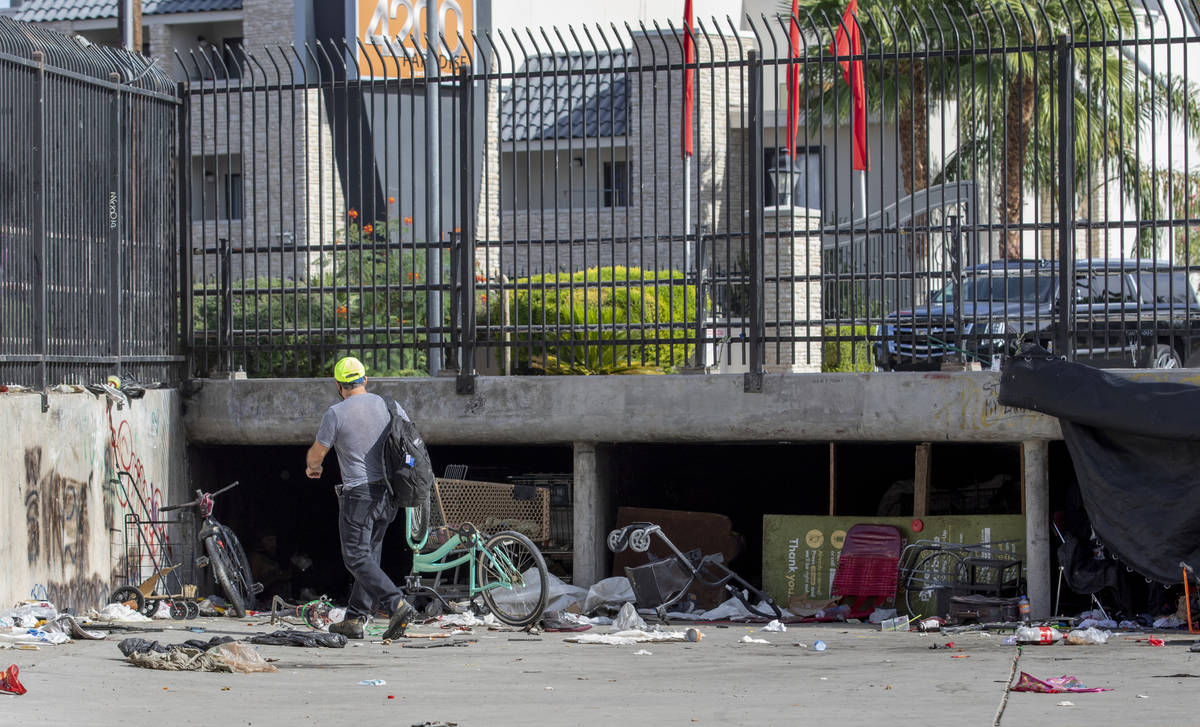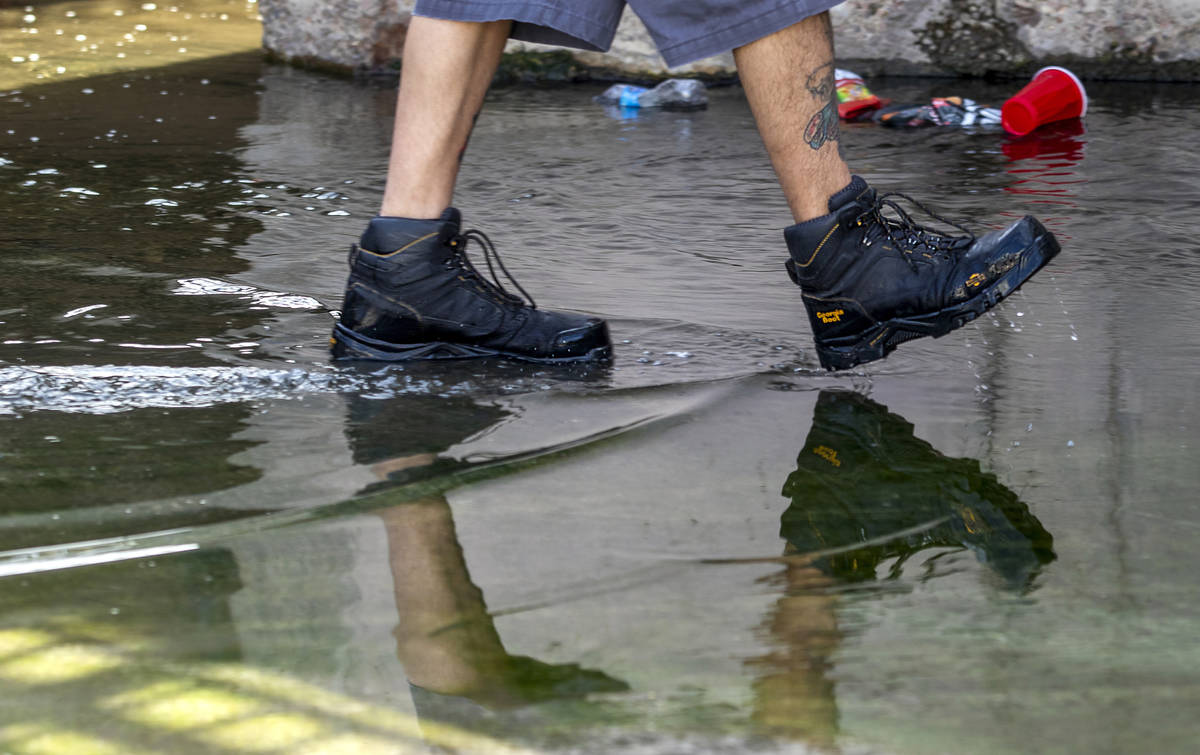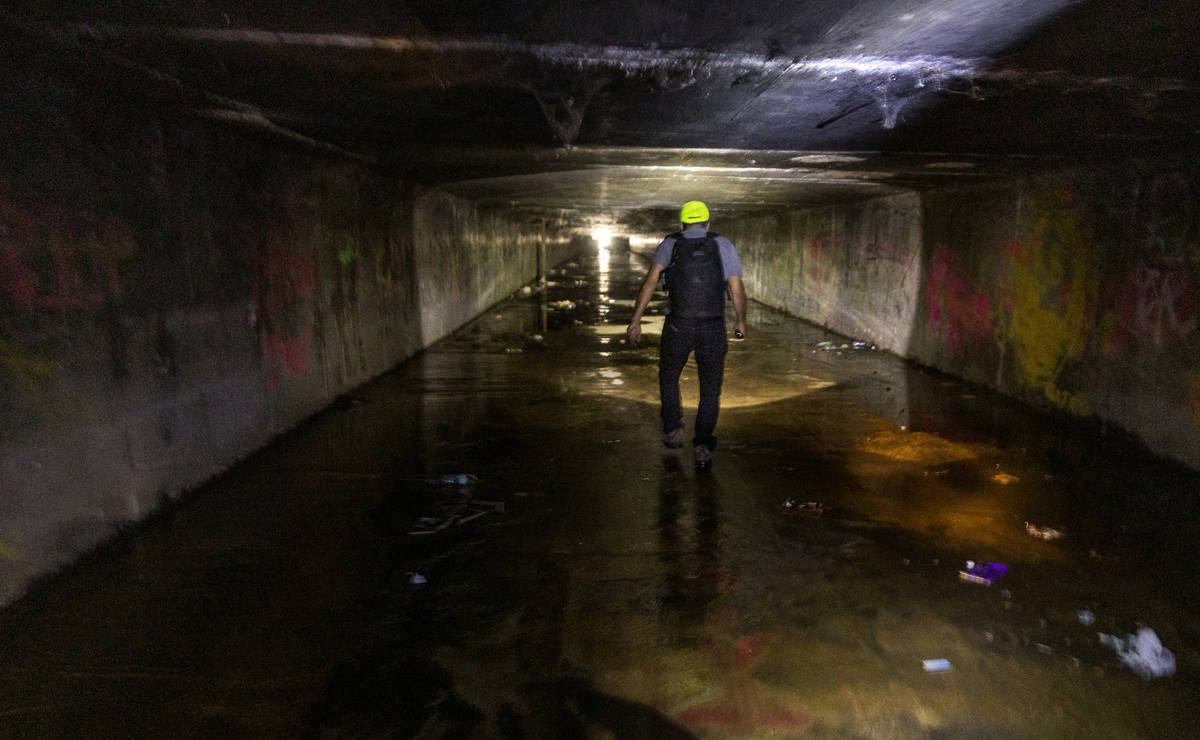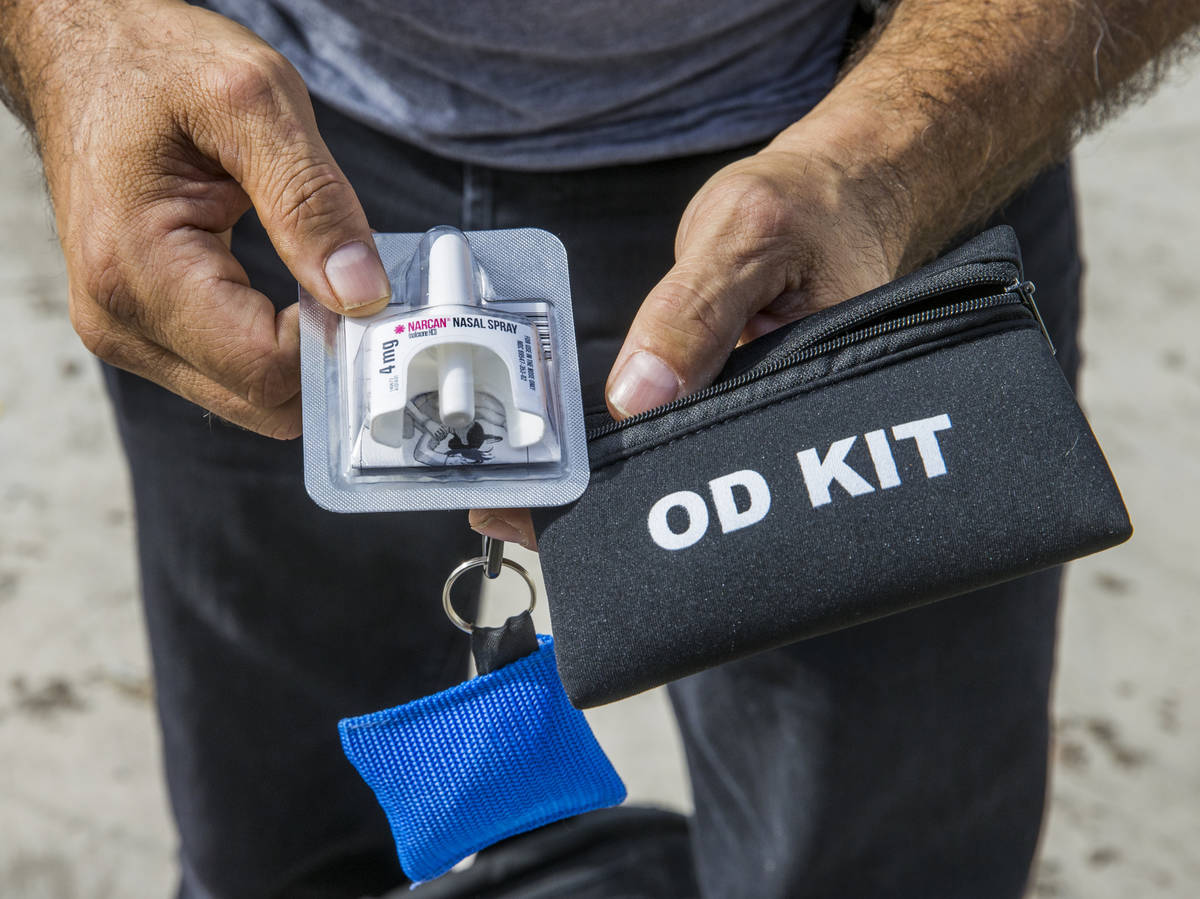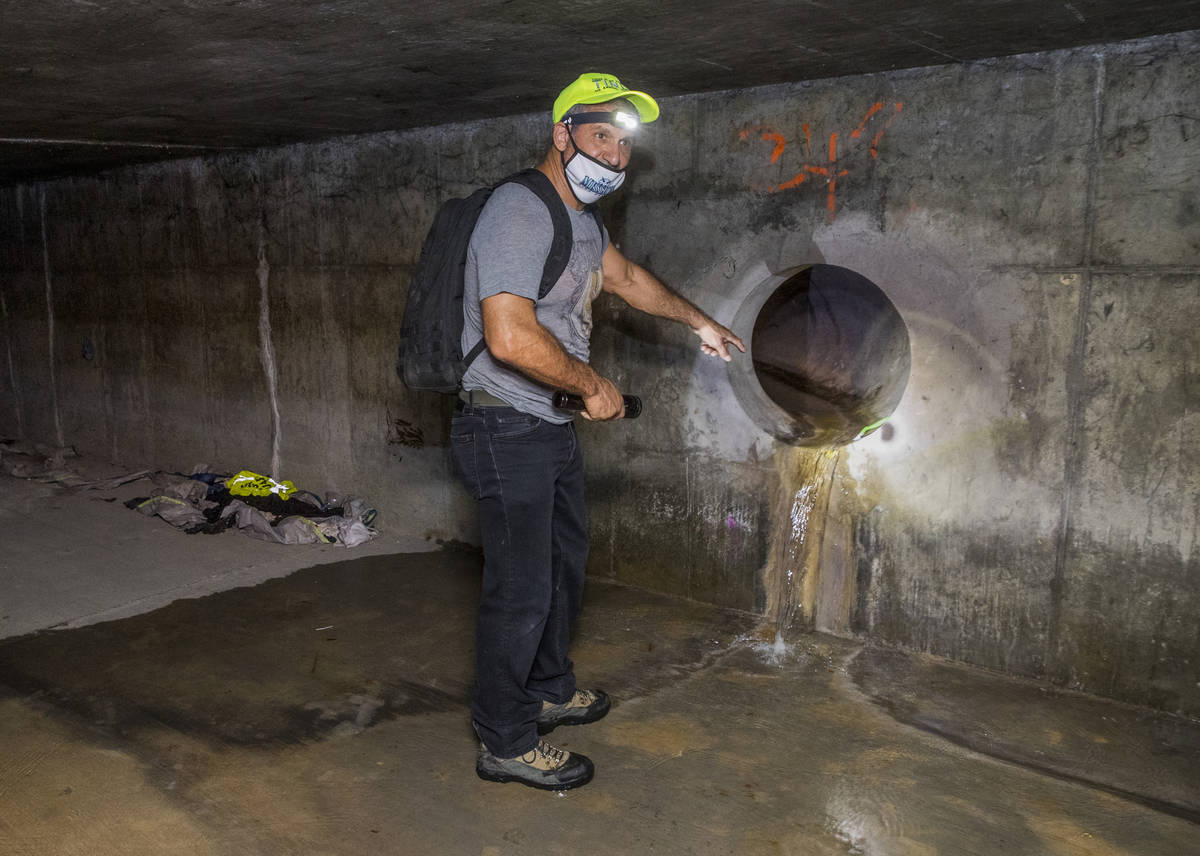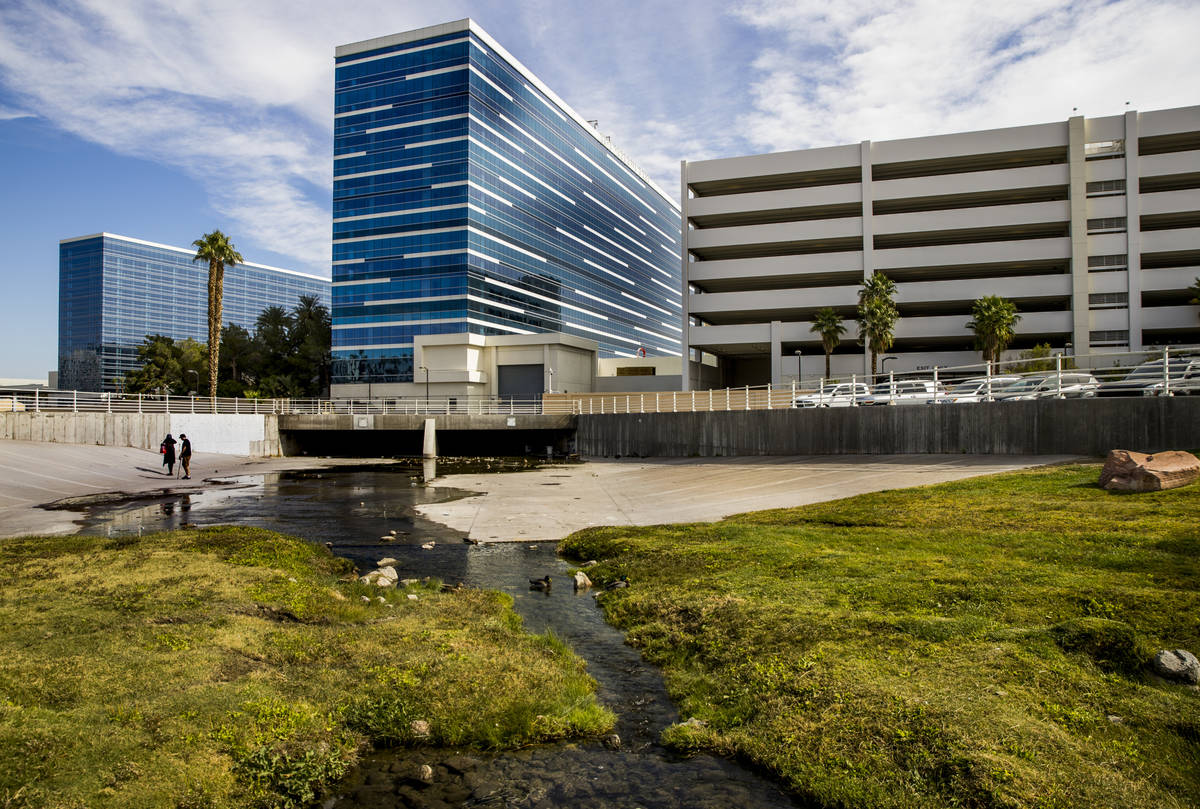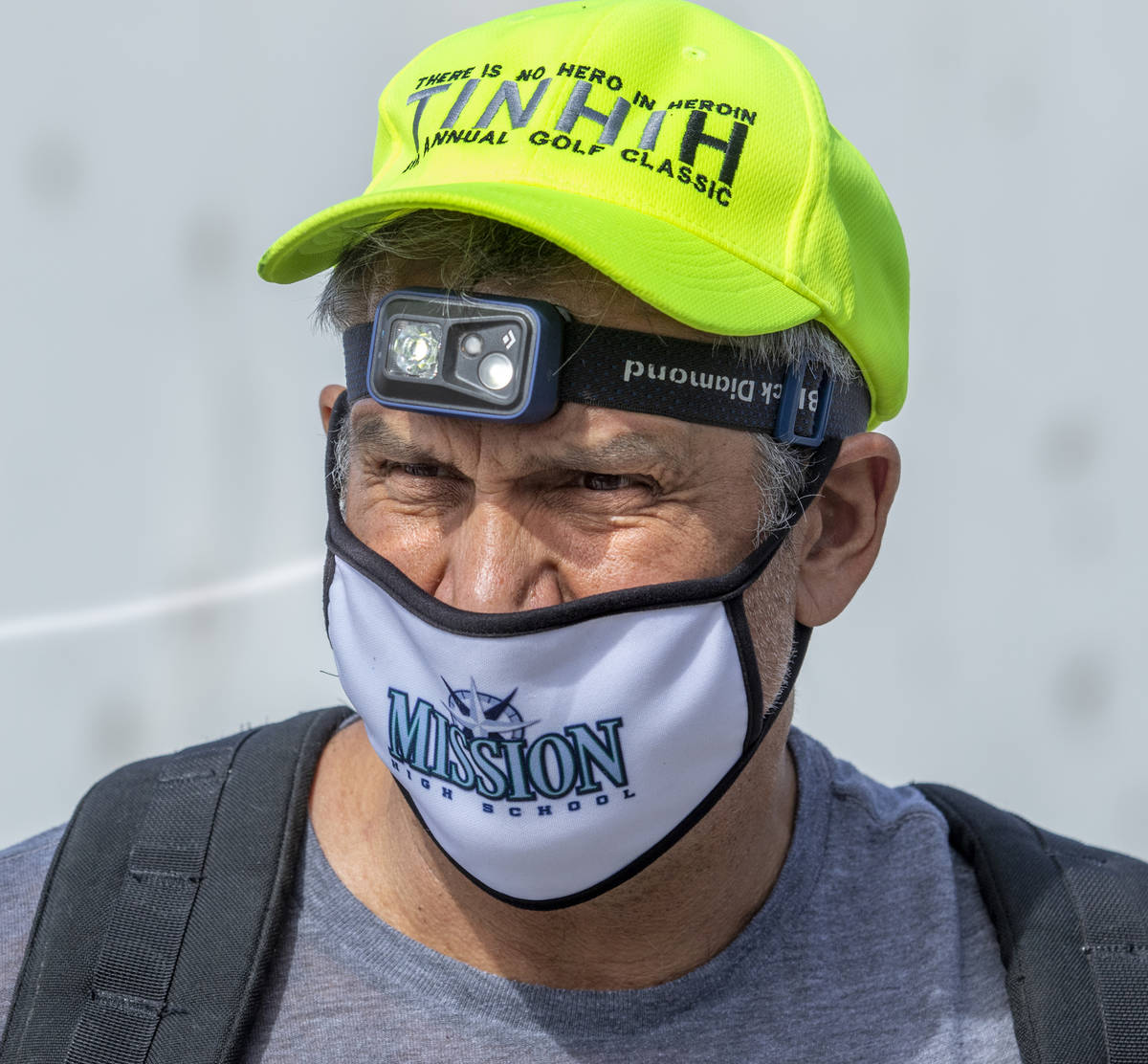Advocates go underground to help homeless in Las Vegas tunnels
While Dave Marlon was on his monthly trek into the tunnels underneath Las Vegas on Saturday, a man preparing a heroin needle said he was a “slave” to the drug.
Marlon knew the feeling. Before he got help for alcoholism and drug addiction more than 15 years ago, he felt like he was undergoing “a slow process where my soul became owned,” said Marlon, CEO of CrossRoads of Southern Nevada, a drug and alcohol treatment center.
Many CrossRoads’ patients are homeless or mentally ill, and some live in the more than 600 miles of tunnels underneath the Las Vegas Valley. Marlon, who came to CrossRoads in December, said he saw a decrease of patients during the early months of the coronavirus pandemic, but he now estimates there has been at least 10 percent more people looking to detox in the past two months.
He said he fears that soon he’ll see more faces in the dark tunnels, where community rules are written in graffiti and ankle-deep running water is a constant reminder that the next flash flood will wash away people’s makeshift homes.
“With hundreds of thousands of Las Vegans who are out of work right now, people are doing the math: Do I pay my $900 a month in rent or do I go camping in the shelter of these tunnels?,” Marlon said.
Eviction concerns
Paul Vautrinot, who helped start Shine a Light, a nonprofit that provides resources to those in the tunnels, said he’s especially wary that the end of Nevada’s eviction moratorium, which stopped Oct. 15, will cause an increase in homelessness.
“It’s not been a dramatic increase (in the tunnels) yet, but I’m sure that it will be soon,” said Vautrinot, who led a small group of volunteers into the tunnels on Saturday to also hand out food, water and resources.
Every month, Marlon passes out water, Gatorade, burritos and the nasal spray Naloxone, also known as Narcan, which temporarily reverses the effects of opioid or heroin overdoses. On Saturday, he ventured into a tunnel near the former Hard Rock Hotel and talked with about a dozen people living there.
Graffiti at the tunnel’s entrance instructs people to announce themselves as they enter. The residents, in tents and shelters constructed of any available building material, want to know who is coming into their “living rooms,” Marlon said.
Signs of home are found in a dart board on the concrete wall, a bicycle on its side and an anatomy poster used as decoration. A spray-painted message directed people to “Joe’s House,” and another let others know there will be “no warning shot,” which Marlon said is half-intimidation tactic, half-serious.
“There’s a stigma; you don’t really know what to expect when you go in,” said CrossRoads director Brittani Sitar, who also volunteers with Shine a Light and traveled into the tunnels for the first time on Saturday.
Sitar said people on Saturday were unwilling to hoard all of the volunteers’ resources for themselves.
Vautrinot, who spent about two years in the tunnels while struggling with a drug addiction, said communal living is common, with people only “taking what they need.” But during the pandemic, finding what they need has been harder, he said.
“I haven’t really come across a lot of people that have complained about COVID symptoms, so much as the ability to survive has gotten a lot harder,” he said. “Not as many people are engaging with them, resources aren’t as easily obtained.”
On Saturday, people in the tunnels asked him questions about what detoxing is like and how to use nalaxone. Marlon said his trips are “planting the seeds” to convince people to go to rehab in the future.
His cellphone number is on business cards he hands out, and he tells the tunnels’ residents that he will answer any text to take someone out of the dark and into the CrossRoads facility.
“We just offer people a way out,” he said.
Contact Katelyn Newberg at knewberg@reviewjournal.com or 702-383-0240. Follow @k_newberg on Twitter.



